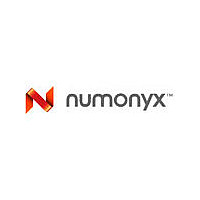PC28F00AP33TFA NUMONYX, PC28F00AP33TFA Datasheet - Page 24

PC28F00AP33TFA
Manufacturer Part Number
PC28F00AP33TFA
Description
IC FLASH 1GBIT P33 65NM 64EZBGA
Manufacturer
NUMONYX
Series
Axcell™r
Datasheet
1.JS28F00AP33TF.pdf
(86 pages)
Specifications of PC28F00AP33TFA
Format - Memory
FLASH
Memory Type
FLASH
Memory Size
1G (64M x 16)
Speed
95ns
Interface
Parallel
Voltage - Supply
2.3 V ~ 3.6 V
Operating Temperature
-40°C ~ 85°C
Package / Case
64-TBGA
Lead Free Status / RoHS Status
Lead free / RoHS Compliant
Other names
904253
904253
PC28F00AP33TF 904253
904253
PC28F00AP33TF 904253
Available stocks
Company
Part Number
Manufacturer
Quantity
Price
Company:
Part Number:
PC28F00AP33TFA
Manufacturer:
Micron Technology Inc
Quantity:
10 000
8.0
8.1
8.2
Note:
Datasheet
26
Program Operation
The device supports three programming methods: Word Programming (40h or 10h),
Buffered Programming (E8h, D0h), and Buffered Enhanced Factory Programming (80h,
D0h). The following sections describe device programming in detail.
Successful programming requires the addressed block to be unlocked. If the block is
locked down, WP# must be deasserted and the block must be unlocked before
attempting to program the block. Attempting to program a locked block causes a
program error (SR[4,1] set) and termination of the operation. See
“Security” on page 33
Word Programming
Word programming operations are initiated by writing the Word Program Setup
command to the device. This is followed by a second write to the device with the
address and data to be programmed. The device outputs Status Register data when
read. See
and within the specified V
During programming, the WSM executes a sequence of internally-timed events that
program the desired data bits at the addressed location, and verifies that the bits are
sufficiently programmed. Programming the flash memory array changes “ones” to
“zeros”. Memory array bits that are zeros can be changed to ones only by erasing the
block.
The Status Register can be examined for programming progress and errors by reading
at any address. The device remains in the Read Status Register state until another
command is written to the device.
Status Register bit SR.7 indicates the programming status while the sequence
executes. Commands that can be issued to the device during programming are Read
Status Register, Read Device Identifier, Read CFI, and Read Array (this returns
unknown data).
When programming has finished, Status Register bit SR.4 (when set) indicates a
programming failure. If SR.3 is set, the WSM could not perform the word programming
operation because VPP was outside of its acceptable limits. If SR.1 is set, the word
programming operation attempted to program a locked block, causing the operation to
abort.
Before issuing a new command, the Status Register contents should be examined and
then cleared using the Clear Status Register command. Any valid command can follow,
when word programming has completed.
Buffered Programming
The device features a 512-word buffer to enable optimum programming performance.
For Buffered Programming, data is first written to an on-chip write buffer. Then the
buffer data is programmed into the flash memory array in buffer-size increments. This
can improve system programming performance significantly over non-buffered
programming. (see
When the Buffered Programming Setup command is issued, Status Register information
is updated and reflects the availability of the buffer. SR.7 indicates buffer availability: if
set, the buffer is available; if cleared, the buffer is not available.
The device defaults to output SR data after the Buffered Programming Setup Command
(E8h) is issued. CE# or OE# must be toggled to update Status Register. Don’t issue the
Figure 30, “Word Program Flowchart” on page
Figure 32, “Buffer Program Flowchart” on page
for details on locking and unlocking blocks.
PPL
min/max values.
74. VPP must be above V
Order Number: 208043-05
Section 10.0,
76).
P33-65nm
Apr 2010
PPLK
,












